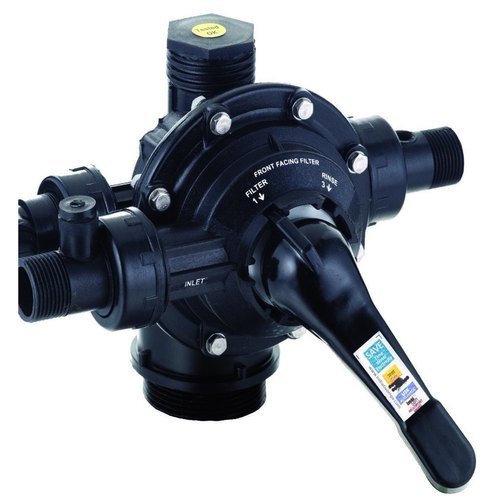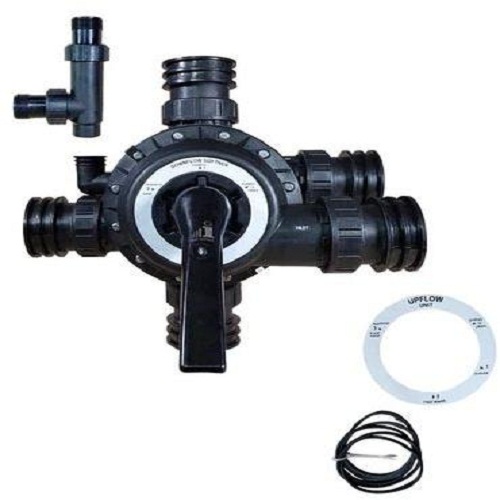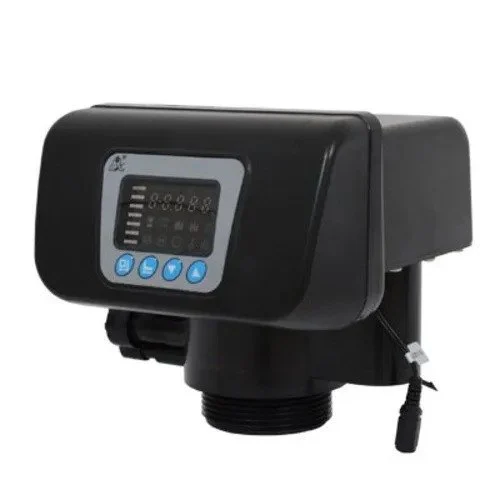
our category
MULTI PORT VALVE
Multi-Port Valve: Versatile Flow Control for Diverse Applications
Overview:
A multi-port valve is a type of valve that is designed to control the flow of fluids (liquids or gases) through multiple ports. Unlike traditional valves, which typically have only one inlet and one outlet, a multi-port valve features several ports that allow it to manage and direct flow between multiple pipelines or chambers. Multi-port valves are widely used in various industries, including water treatment, chemical processing, and HVAC systems, where multiple fluid streams need to be controlled and directed to different paths.
Enquire Now
Working Principle:
The working principle of a multi-port valve is straightforward: it uses a rotating or sliding mechanism within the valve body to connect and disconnect different inlet and outlet ports. When the valve is operated, the internal mechanism moves, allowing fluid to flow from one port to another, depending on the valve’s configuration.
Multi-port valves can be operated manually or automatically, with different designs and configurations depending on the required flow path and application.
Types of Multi-Port Valves:
-
Three-Way Valve: A three-way valve is one of the most common multi-port valves and is used to control the flow between three different ports. It can function in two main modes: mixing or diverting. In mixing mode, it combines two fluid sources into one output, while in diverting mode, it directs the flow from one inlet to two different outputs.
Applications:
- HVAC systems (for mixing hot and cold water)
- Water treatment systems (for diverting flow between treatment tanks)
- Chemical processing
-
Four-Way Valve: A four-way valve is commonly used in systems where four different flow paths need to be managed. It can be used for more complex routing of fluids, offering even greater flexibility than a three-way valve. Four-way valves are typically employed in systems where the flow must be diverted in multiple directions, often used in combination with pumps, filters, or tanks.
Applications:
- Air compressors and pneumatic systems (to direct air flow between different chambers)
- Chemical reactors (to manage multiple input and output streams)
- Hydraulic systems (for controlling direction of fluid flow)
-
Six-Way Valve: As the name suggests, a six-way valve has six ports and can route the flow to or from six different paths. These valves are used in highly specialized systems where multiple fluids need to be managed simultaneously. Due to their complexity, they are often employed in systems that require precise control of multiple variables.
Applications:
- Complex fluid management systems
- High-precision chemical manufacturing
- Multi-stage filtration and treatment systems
-
Rotary Multi-Port Valve: The rotary multi-port valve uses a rotating mechanism, often a spindle or ball, to control the fluid flow between the various ports. These valves typically have a spherical or cylindrical design, with internal passageways that align with the different ports as the valve rotates.
Applications:
- Water and wastewater treatment plants
- Chemical processing units
- Automated process control systems
-
Sliding Multi-Port Valve: The sliding multi-port valve uses a sliding disc or plate inside the valve body to open or close different ports. This type of valve is often used in applications where precise control of multiple flow paths is required, and it can be manual or automated.
Applications:
- Fluid distribution systems
- HVAC flow management
- Process control in manufacturing plants
Applications of Multi-Port Valves:
-
Water Treatment Systems: In water treatment plants, multi-port valves are crucial for directing water through different filtration stages, treatment tanks, and storage reservoirs. For example, a multi-port valve may be used to divert water from a tank to a filtration system and then direct the treated water to storage.
-
Chemical Processing: Chemical industries use multi-port valves to control the flow of chemicals between various tanks, reactors, and mixing chambers. The ability to switch between different process lines and manage flow paths makes multi-port valves essential in maintaining controlled reactions and processes.
-
HVAC Systems: Multi-port valves are used in HVAC systems for the efficient distribution of hot and cold water between various components like radiators, air handlers, and cooling systems. For example, in a building’s heating system, a three-way valve may mix hot water from a boiler with cooler water from the return system to maintain a desired temperature.
-
Pneumatic and Hydraulic Systems: Pneumatic and hydraulic systems use multi-port valves to control the flow of air or fluid between different chambers and actuators. For example, a four-way valve in a pneumatic system controls the direction of airflow, switching the output between two chambers based on system requirements.
-
Filtration Systems: In filtration systems, multi-port valves are used to alternate between filtering, backwashing, and bypassing flow. They are used in applications like swimming pool filtration systems, industrial filtration units, and water treatment plants to maintain optimal filtering conditions.
-
Cooling and Heating Systems: Multi-port valves are often utilized in industrial and residential cooling and heating systems. They can regulate the flow of hot or cold fluids to and from various parts of the system, ensuring that the desired temperatures are maintained in different sections of the process.
Advantages of Multi-Port Valves:
-
Space-Saving Design: Multi-port valves eliminate the need for multiple single-port valves, saving space in systems where multiple flow paths are required. This design reduces the complexity of piping and makes the system more compact and cost-effective.
-
Flexibility: These valves offer high flexibility by enabling the control of multiple flow paths within a single device. This allows for better flow management, reduces the need for additional valves, and streamlines the system's overall design.
-
Reduced Maintenance: By using one multi-port valve to manage several flow lines, maintenance requirements are reduced. Fewer valves mean fewer potential points of failure and less upkeep, improving the overall reliability of the system.
-
Improved Efficiency: Multi-port valves can reduce the operational complexity of the system. They allow for smoother transitions between different process flows, helping to improve the overall efficiency of the system.
-
Cost Savings: Using multi-port valves in place of multiple individual valves can lead to cost savings in both equipment and installation. Fewer valves mean reduced material costs, less labor for installation, and easier system configuration.
Disadvantages of Multi-Port Valves:
-
Complexity in Design: Multi-port valves can be more complex than single-port valves, and their design might require careful consideration of flow characteristics and pressure requirements. Incorrect design or selection can lead to system inefficiencies.
-
Higher Initial Cost: Although multi-port valves can save costs in the long run, their initial cost may be higher than that of simpler, single-port valves due to their complexity and the materials required for their construction.
-
Maintenance Complexity: Although they reduce the number of valves in a system, when maintenance or repair is required, it may be more challenging to work on multi-port valves due to their intricate design.
-
Limited Pressure and Flow Range: Multi-port valves are generally used for moderate flow and pressure applications. In extremely high-pressure or high-flow systems, they might not perform as effectively as specialized valves designed for those conditions.
Conclusion:
The multi-port valve is a versatile and essential component in many industrial and residential systems that require the control of multiple fluid flow paths. From water treatment plants and HVAC systems to chemical processing and pneumatic operations, multi-port valves provide a practical, efficient, and cost-effective solution for managing the flow of liquids and gases across multiple channels. By reducing the need for multiple individual valves and simplifying system design, these valves help streamline operations, improve system performance, and save on maintenance and operational costs. Despite some challenges in design and maintenance, multi-port valves remain a key element in industries where flow management and process control are critical.


